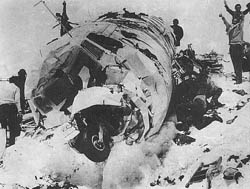Extending Reading:
"It's Magical it's malleable, it's memory."

1.
What is the relationship between memory and selfhood? :”We remember, therefore we are.” The article mentioned that our selves are created by the “creative blending and reblending of experiences and emotions.” So our identities are defined by our memories of those passed events and feelings. Some of us think that our experiences constructed our personalities; however, it is rather the memories of what we experienced that shaped who we are. Certain psychologists would say that memories are like “bedrock”; we remember exactly what happened. But later in the article you would find that memories are malleable that you can even create the false memory. Therefore, we can conclude that our sense of self is acceptable to changes.
2.
What new discovery about memory do you find most interesting?: The new discovery that I found really interesting is the new sophisticated Pet scan that are able to recorded the neural impulses that are the one that hold our memories. Another one that I am fascinated by is the drugs that might be use to prevent the certain diseases that cause memory loss. If the psychologists are able to prove that they can be used to prevent those diseases, one’s life might not be ruined. Therefore I think the drugs will be very beneficial.
3.
What is the homunculus crisis?: Homunculus crisis is the mystery associated when memories that psychologist could not be able to explain. Who is controlling our memories? Why do we remember a certain events, but not the other? Do we really have control on our memories?
4.
Which theory of dreams finds support in the experiments by Lynch? : Lynch proves that rats’ memories improved when they sleep. The brains would send particular patterns of impulses, which are called ‘theta waves’. Lynch’s experiment supports the biological dream theories; Vertes’s and Hobson’s. Vertes’s theory states that we dream because our brains prevent our body to clip into a coma stage by sending an impulse. Another one is Hobson’s, which states that our brainstems randomly send neural impulses.
5.
How can some memories become indelible?: There are some memories that are indelible, which mostly are the emotionally arousing experiences. Sometimes the brains might take that kind of situations as the “fight or flight” situation. Our systematic bodies would secrete the stress hormones, which surprisingly have effects on our neurons. They strengthen the storage of memory of that event. That occurs naturally because we need to remember those events in order to survive in the future. Therefore it all depends on the hormonal regulations.
6.
How can amnesia and repression be explained? : Many psychologists believe that amnesia and repression is the result of the malfunction of hippocampus. It is possible that the subjects remove their conscious in the repeated traumatic events, thus, the memory dissociates and eventually was lost. However, the repression might not even be true since sometimes, our imagination and perception could be confused because according the research, when we visually imagine something, there’s an activation in the part of brain that works when we percepts something. Therefore there’re a few explanations for amnesia and repression.
7.
Explain the following statement: "Memory is more reconstructive than reproductive.": Memories have often been lost through times. We build up our memories according to what we already know. We think it should happen that way, therefore, we thought it happen that way. Memory is not reproductive because we are not capable of remembering every detail of an event. It is rather reconstructive because we build our own memories according to the knowledge we already have and the clues we are given.
8.
What new paradigm of memory is now emerging?: The new paradigm of memory that is now emerging is that memories are reconstructed and they are the “blending of fact and friction.” We create and recreate our memories from “experiences and emotions”, and those memories shape us in some way.
9.
After reading this article, what conclusions can you make about memory?: My conclusion on memory is that they are extremely malleable and a very sensitive matter. Some events are stored as a good memory due to our hormonal regulation. Some are vague, because of amnesia or repression resulting from the traumatic events. Some are very indelible, while some are lost through time. After I finish reading this article, the only conclusion I could come to is that the memories are very flexible.






